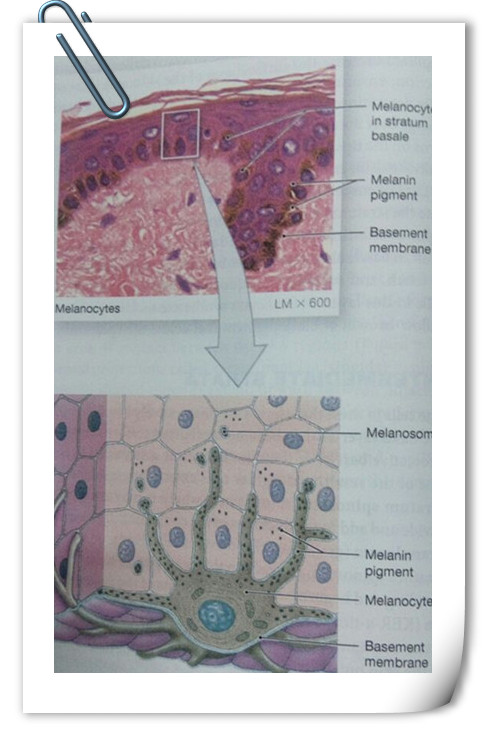Role of Pigmentation related to Vitiligo
The epidermis contains variable amounts of two pigments, carotene and melanin. Carotene is an orange –yellow pigment that normally accumulates in epidermal cells. Carotene pigments are  present in a variety of orange –colored vegetables, such as carrots and squashed. Eating lots of carrots can actually cause the skin of light-skinned individuals to turn orange. The color change is less striking in the skin of darker individuals. Carotene can be converted to vitamin A, which is required for the normal maintenance of epithelial tissues and the synthesis of photoreceptor pigment in the eye.
present in a variety of orange –colored vegetables, such as carrots and squashed. Eating lots of carrots can actually cause the skin of light-skinned individuals to turn orange. The color change is less striking in the skin of darker individuals. Carotene can be converted to vitamin A, which is required for the normal maintenance of epithelial tissues and the synthesis of photoreceptor pigment in the eye.
Melanin is a brown, yellow-brown, or black pigment produced b melancytes. Melancytes manufacture and store melanin within intracellular vesicles. These vesicles are transferred to the epithelial cells of the stratum basale. Coloring the entire epidermis. Melano-cyte activity slowly increase in response to sunlight exposure, peaking around 10days after the initial exposure. Freckles are small pigmented spots that appear on the skin of pale-skinned individuals. Freckles represent areas of greater-than-average melanin production. They tend to be most abundant on surfaces exposed to the sun, such as the face.
Sunlight contains significant amounts of ultraviolet radiation. A small amount of UV radiation is beneficial because it stimulated the synthesis of vitamin D3 in the epidermis. Too much ultraviolet radiation, however, produces immediate effects of mild or even serious burns. Melanin helps prevent skin damage by absorbing UV radiation before it reaches the deep layer of the epidermis and dermis.



Leave a Comment